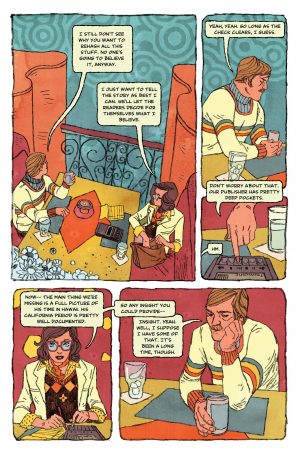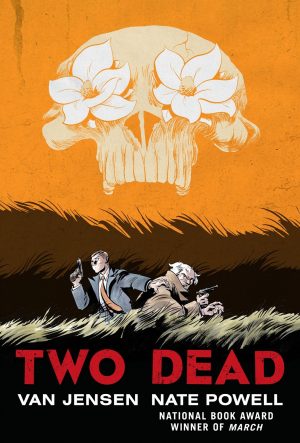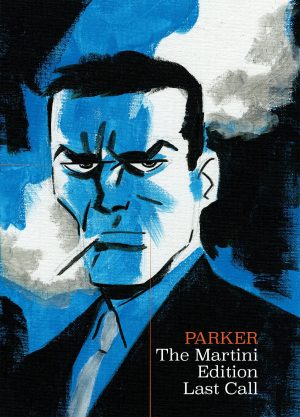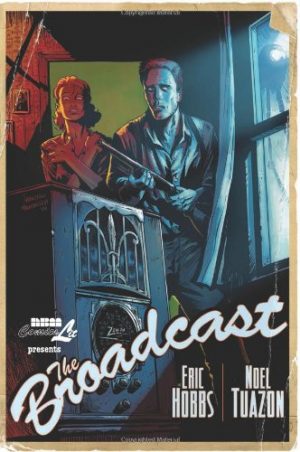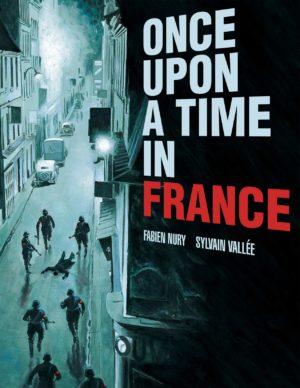Review by Ian Keogh
Three previous volumes have told stories about Byrd’s private detective business and encounters with the supernatural in Hawaii during the mid-1950s. B. Clay Moore has been coy about why Byrd is in Hawaii, although a version was mentioned in passing during The Last Resort. Previous outing Screaming Black Thunder introduced an official investigation into Byrd, with an agent representing the House Un-American Activities Committee flying to Hawaii.
With all that in mind, Moore surprises everyone by opening Aloha in Kansas. In 1972, before dropping back to 1954 and introducing Mike Byrd, private eye. Who knew there was a third Byrd brother? Well, Moore, obviously. It’s not long, though, before he’s sucked readers into what’s happening in Kansas, and that’s despite Jacob Wyatt having a distinctively different style from other artists who’ve worked on Hawaiian Dick. It’s detailed, and Wyatt’s really good with atmosphere, colouring the Hawaiian scenes in a manner suggesting the local heat, with the use of cream coloured word balloons adding to the impression. Wyatt’s characters are tighter versions of Byrd, Kahami and Mo, and overall these are solid pages with the occasional lapse in the foreshortening department, exemplified by a giant Mo looking as if he’s about to step on a car. Wyatt provides layouts for Paul Reinwald’s final chapter, so there is a visual continuity.
Anyone pining for Steven Griffin’s art might find Jason Alexander’s looser back-up strip pages to their liking. They concern Byrd and new friend Tread Lightly, a jazz trumpeter, looking into who might have killed a patron of the Blue Aloha bar where Tread plays. It’s clever, with Moore creating something that’s complete in itself, but also informs the main story.
It’s inevitable that the Byrd brothers will meet, and that occurs after a brutal death and a surprise return, and that’s the core story here. The Un-American Activities plot comes to nothing, so why did Moore include it? Much the same applies to the opening and closing visit to the future, which intrigues at the start and disappoints at the finish. Mike Byrd? Again, when all is said and done he’s pointless, but the neat idea of the framing section means he has to be shoehorned into 1954. There are some shocks, and most of the closing chapter works as intended, so this improves on Screaming Black Thunder, but a stripped down four chapter version would have been more direct and better. What was so fresh and exciting in the first volume has declined to ordinary here.

